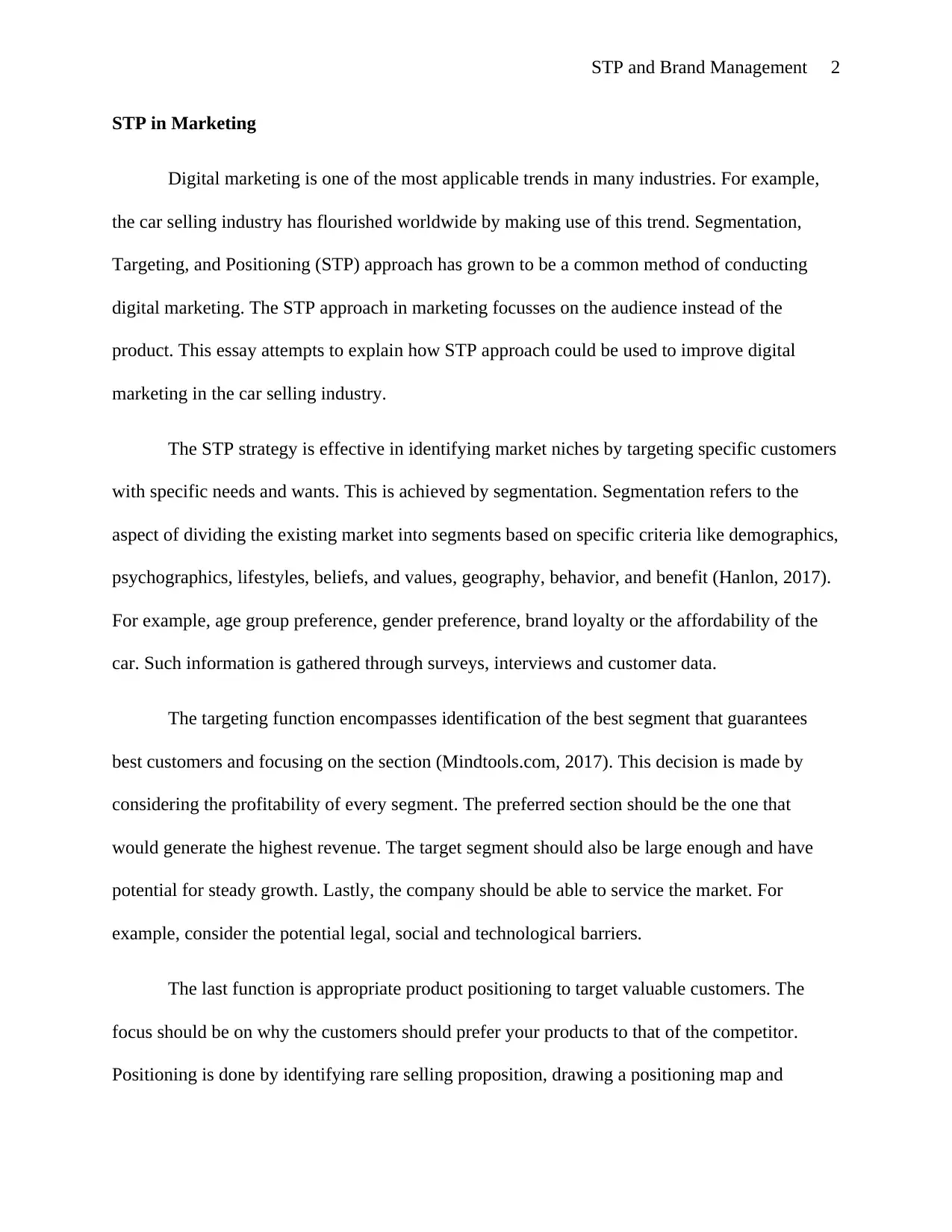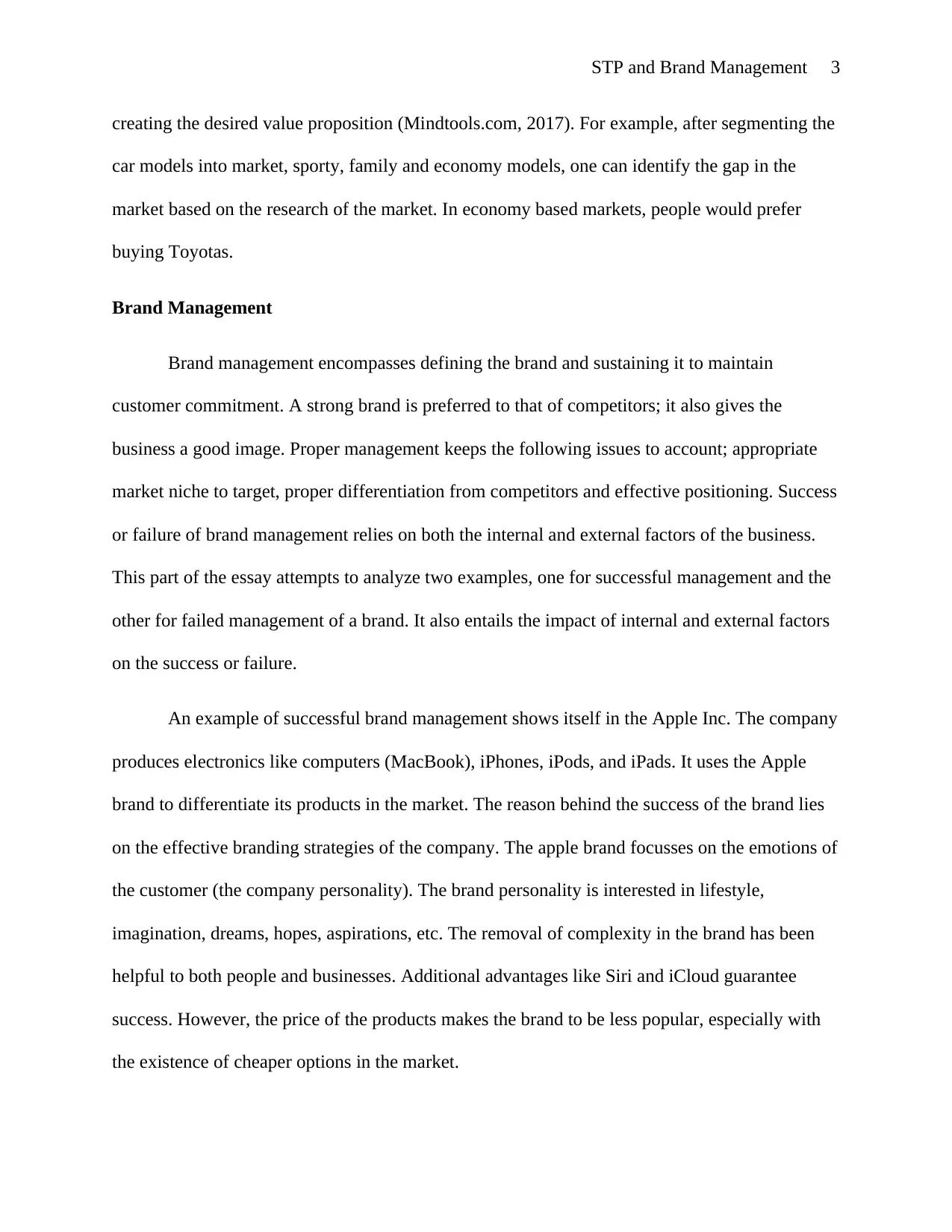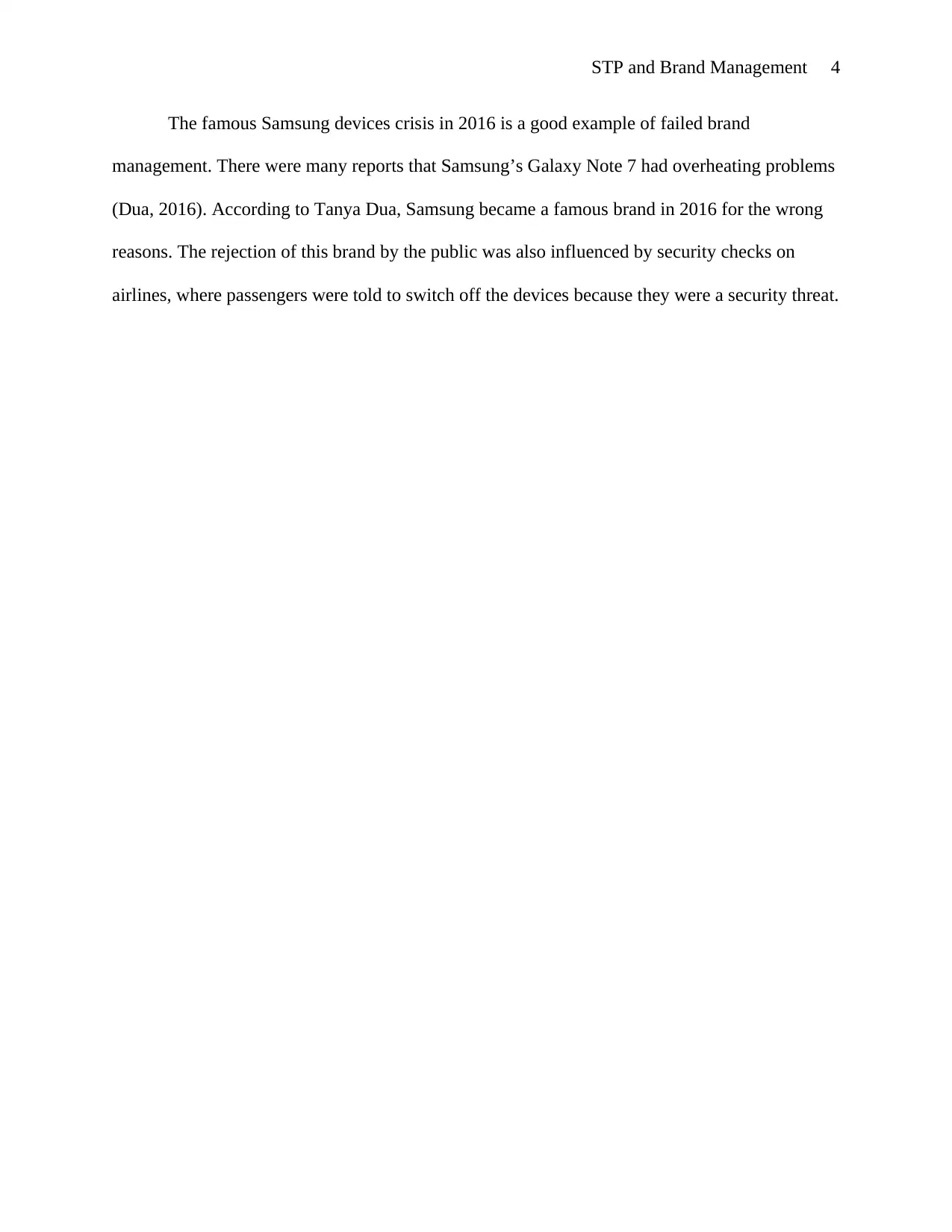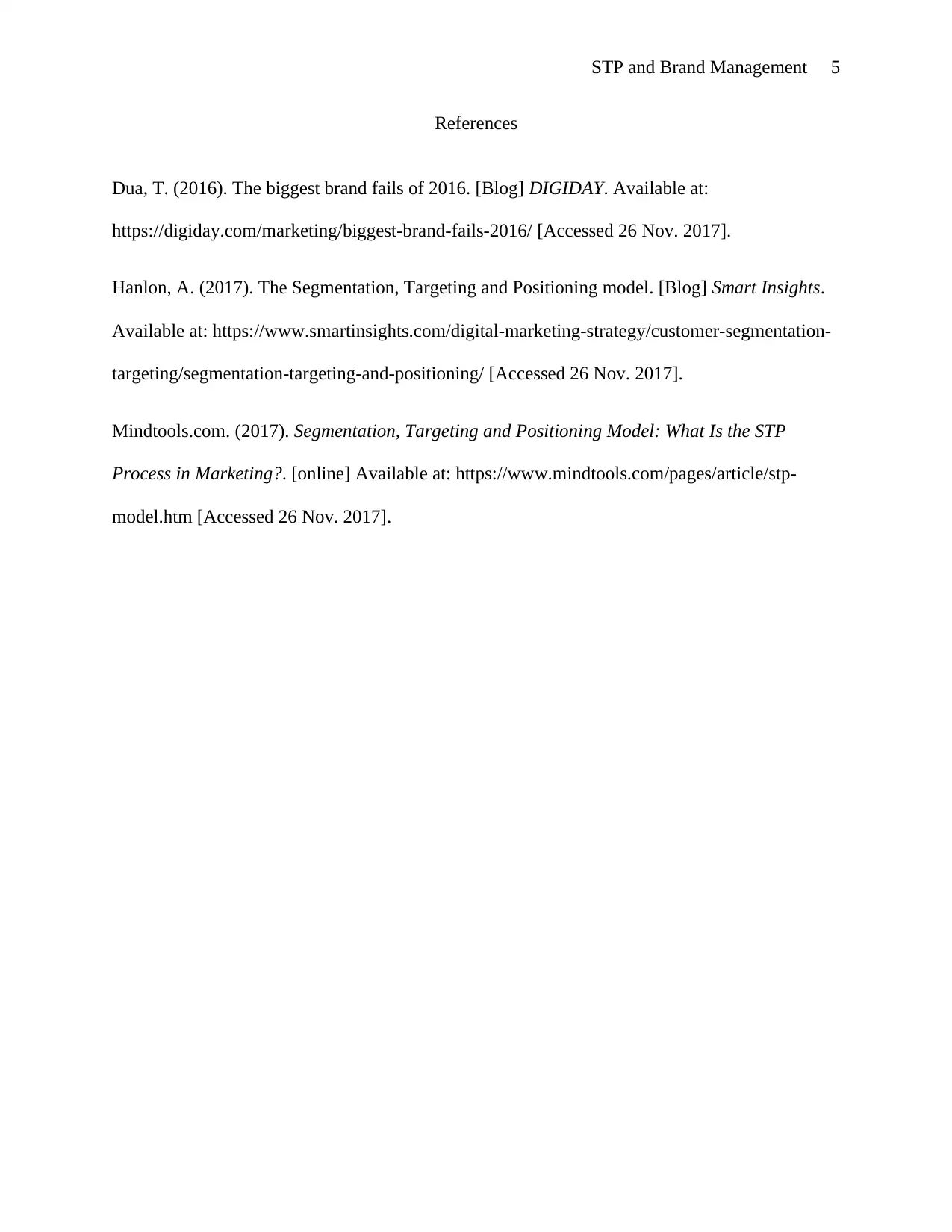Analysis of STP and Brand Management in the Car Industry
VerifiedAdded on 2020/04/15
|5
|848
|313
Essay
AI Summary
This essay delves into the application of the STP (Segmentation, Targeting, and Positioning) approach and brand management within the digital marketing landscape, particularly focusing on the car selling industry. It explains how STP strategies, involving market segmentation based on demographics, psychographics, and behavior, enables businesses to identify and target specific customer segments. The essay then examines brand management, highlighting successful strategies exemplified by Apple Inc., which focuses on customer emotions and lifestyle, and contrasting it with the brand management failures of Samsung's Galaxy Note 7. It analyzes the impact of both internal and external factors on brand success and failure, providing insights into effective marketing strategies. The essay uses examples to illustrate how proper segmentation, targeting, and positioning, along with effective branding, can significantly influence a company's market performance and customer loyalty.
1 out of 5











![Marketing Analysis of Companies Assignment - [University Name]](/_next/image/?url=https%3A%2F%2Fdesklib.com%2Fmedia%2Fimages%2Fym%2F52b2c4cd604e4d6d811166577ee2f21b.jpg&w=256&q=75)
![[object Object]](/_next/static/media/star-bottom.7253800d.svg)